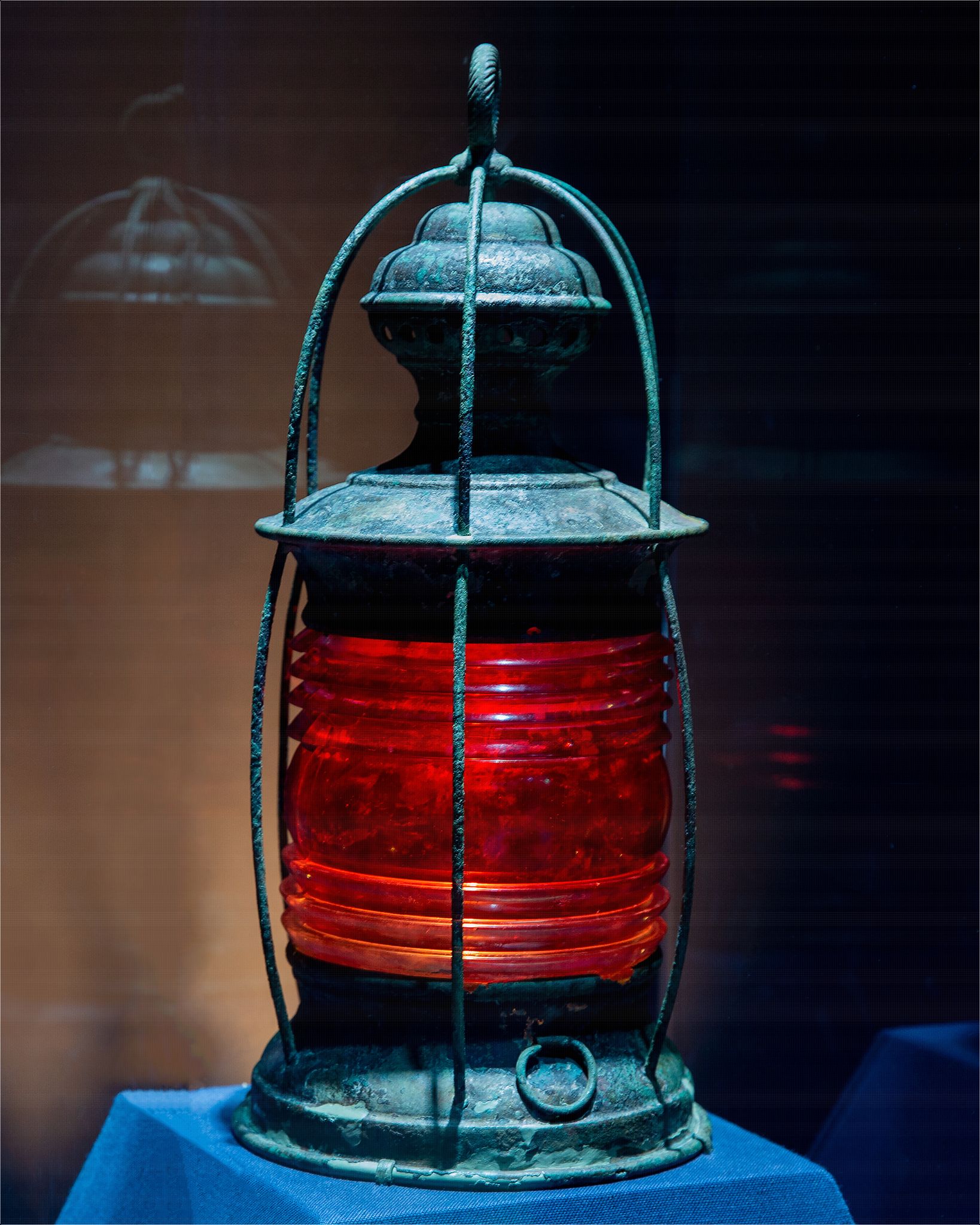The piercing moonlight emanates from the canvas like a siren song, calling you closer, pulling you in as you approach this piece. The wind whips around you, the clouds envelop you, the waves engulf you – there seems to be no escape – it’s too late.
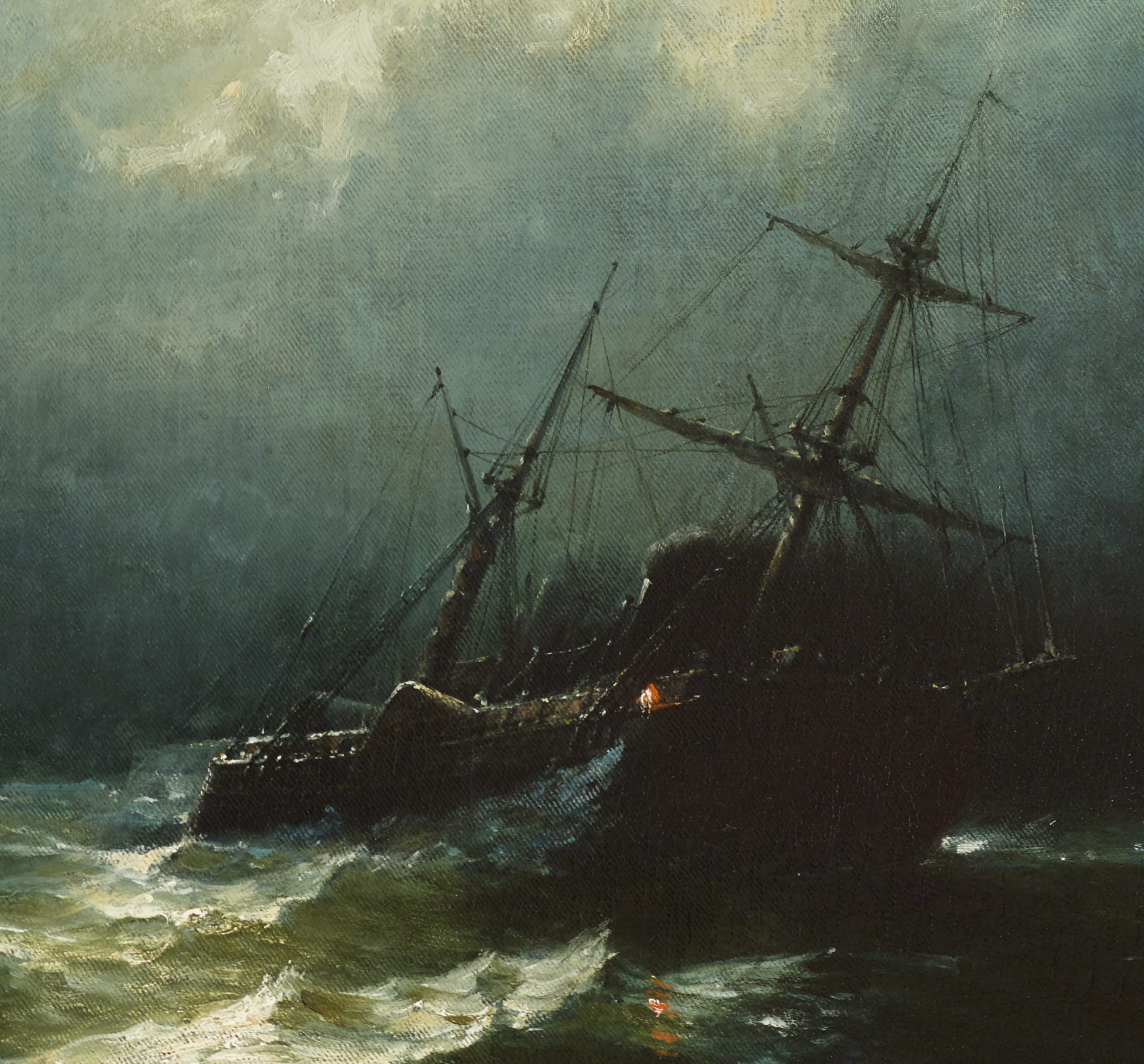
The Power of Light
Personally, I’m a sucker for chiaroscuro – It’s that intense contrast of darkness and light that creates drama in a work of art. It’s what drew me to this piece in the first place. I fell in love with it the moment I saw it. I loved the darkness, the drama, the fact that – for a civil war painting, it wasn’t really “civil war-ish”. Looking at this work, “Rescue of the Crew of the USS Monitor by USS Rhode Island, December 31, 1862” by artist William Richardson Tyler is an experience best enjoyed over a few minutes, at least.
Tyler was Born in 1825 in Nunda, New York. The majority of his work falls into the category of American Romanticism – much of it focusing on his pastoral surroundings in New York State. His style is also highly reflective of the Hudson River School, the first American artist collective, although it was more of a stylistic, ideological grouping rather than a “club”. Not much is known about the artist, however we do know that this work was informed and possibly commissioned by George Greer, Engineer onboard USS Monitor and survivor of this fateful night.
Setting the Scene

You need a second to let your eyes adjust, like they do when you flip off the lights; but once they do – a dramatic scene plays out.
The moonlight illuminates a ship with a red light on the center right of the canvas- USS Rhode Island. Can you see the diagonal line created by her masts, showing the action in this piece? The ship is being tossed by the rough waves of a storm but somehow there’s a calm, a stillness like this is a moment frozen in time.
But what moment is the artist trying to pause? Luckily, the title gives us context: this is a scene of a rescue mission during the final moments of USS Monitor.
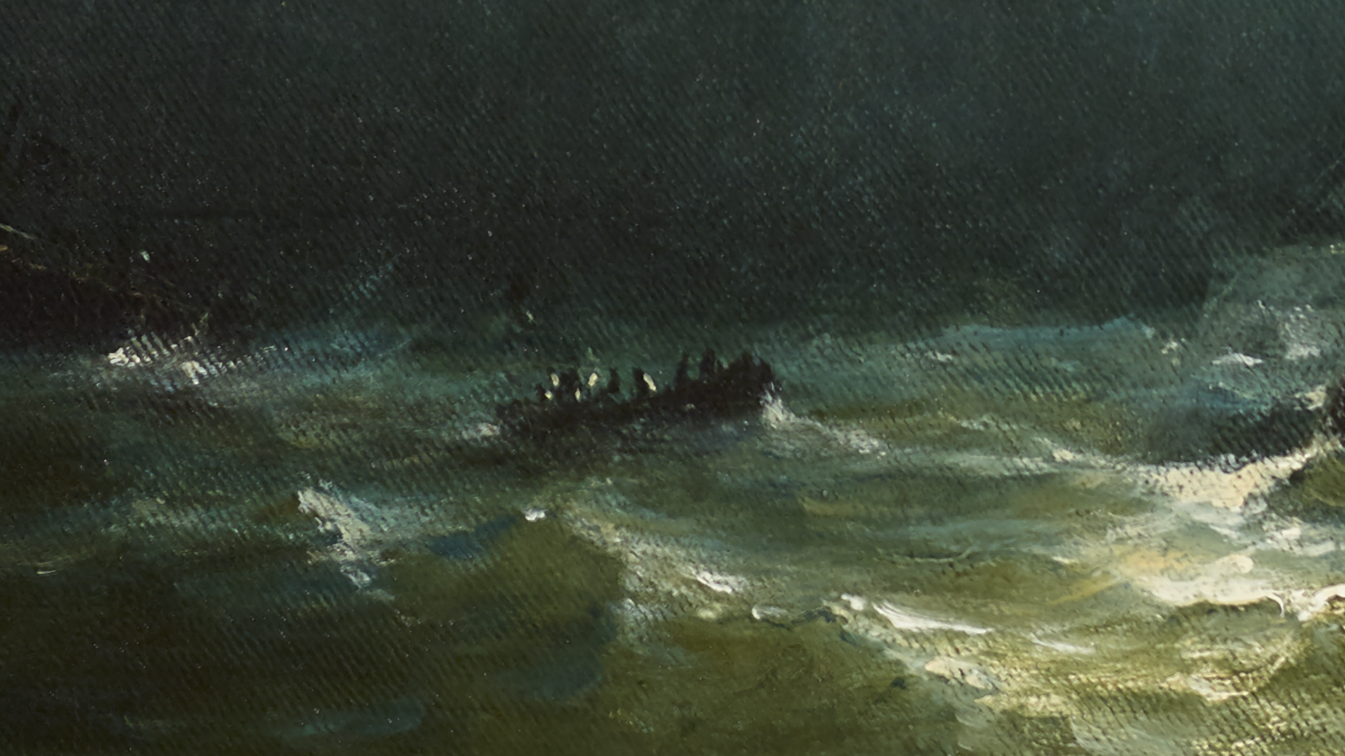
Looking closely, just left of center, there’s a tiny boat filled with figures, really just a few dabs of paint, headed for the Rhode Island. But “where is USS Monitor?” we might ask ourselves.
But then we see it off to the left, cloaked in darkness, the waves swallowing it. It’s lost already, some of the crew is escaping in that little boat.
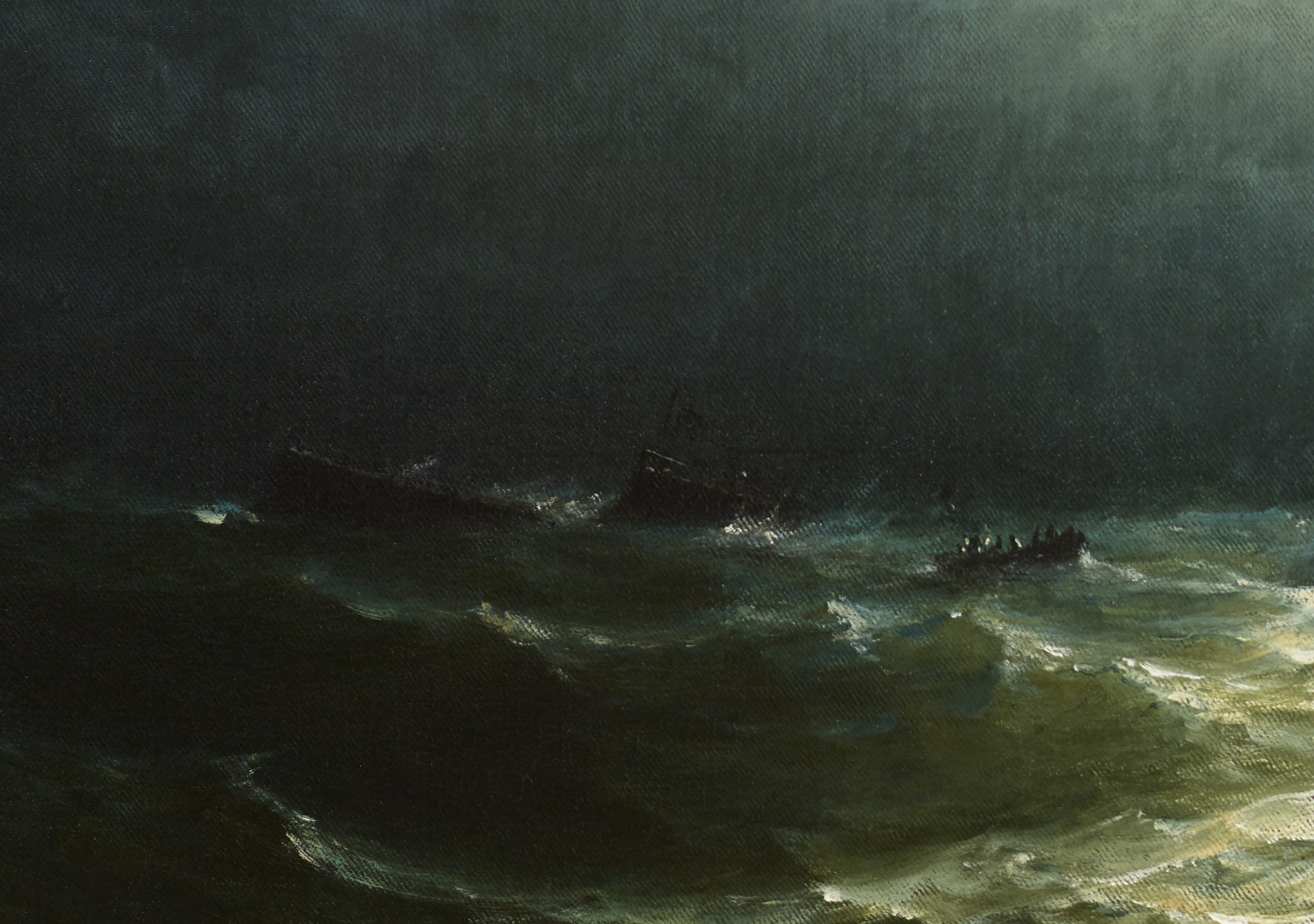
Something Strange
But the artist has done something very peculiar here – typically chiaroscuro is used to highlight the subject or something important in a work of art, but here the waves are the part that is illuminated.
Initially this seems counter intuitive, the subject should be USS Rhode Island, but then we realize- the subject is the act of escaping to safety. The artist has frozen this “will they make it” moment, like the cliffhanger at the end of your favorite show – “what’s going to happen next?” He has us asking
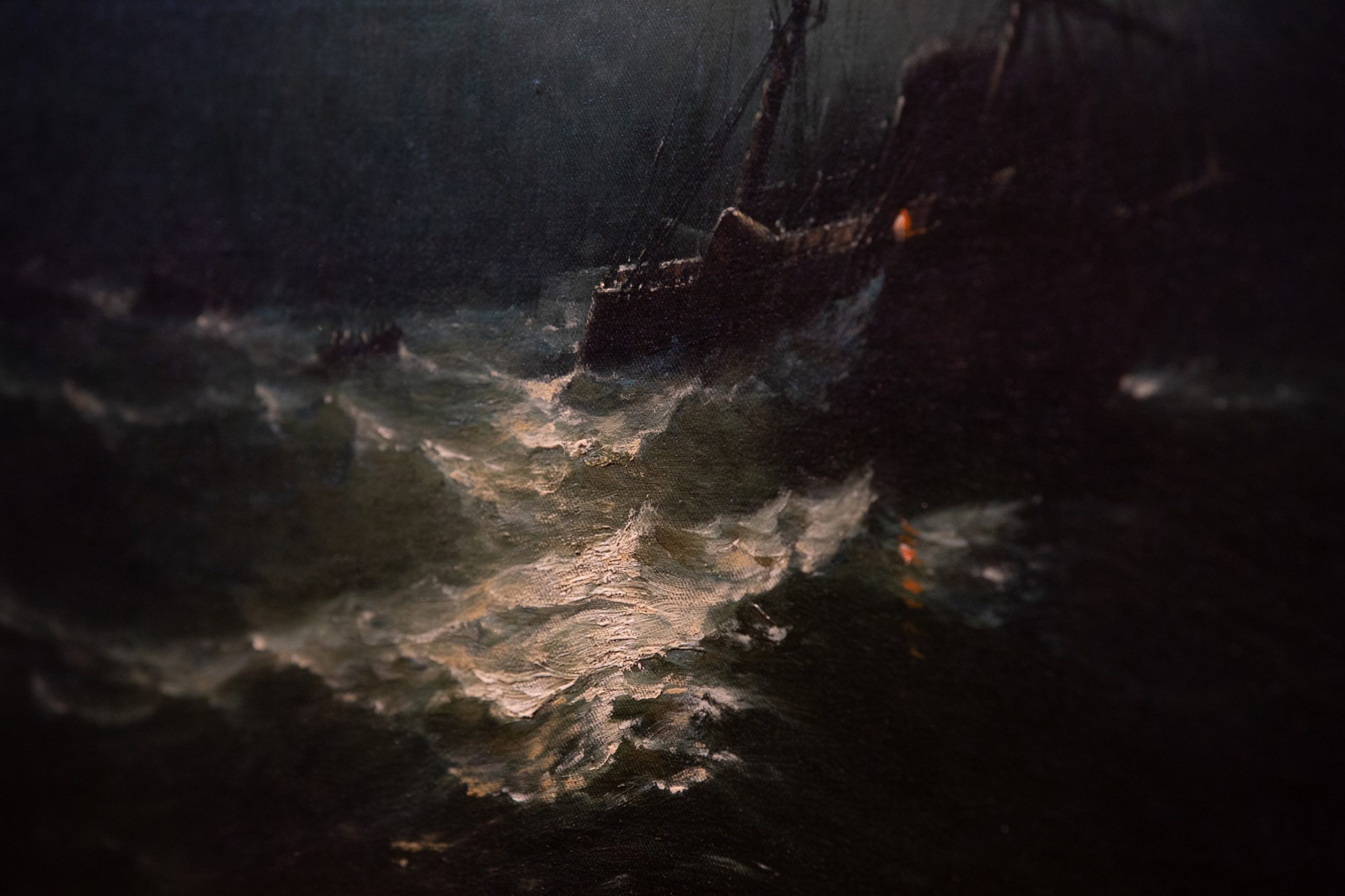
Ghost Painting
As if this painting wasn’t eerie enough – we see something strange, like a shadow of the Rhode Island ever so slightly more centered on the canvas than where the same ship is now. It’s called pentimento (sometimes called ghost painting)- where the artist has painted over part of the image to change the composition. We can still see the ghostly figure of the ship where the original composition was. Interestingly, the positioning of Rhode Island is not the only part of the composition that was changed. The artist also changed the placement of the moon two times before placing it in its current position. There is a buildup of paint, called impasto, in the clouds that not only adds texture and captures the light, but disguises the pentimento.
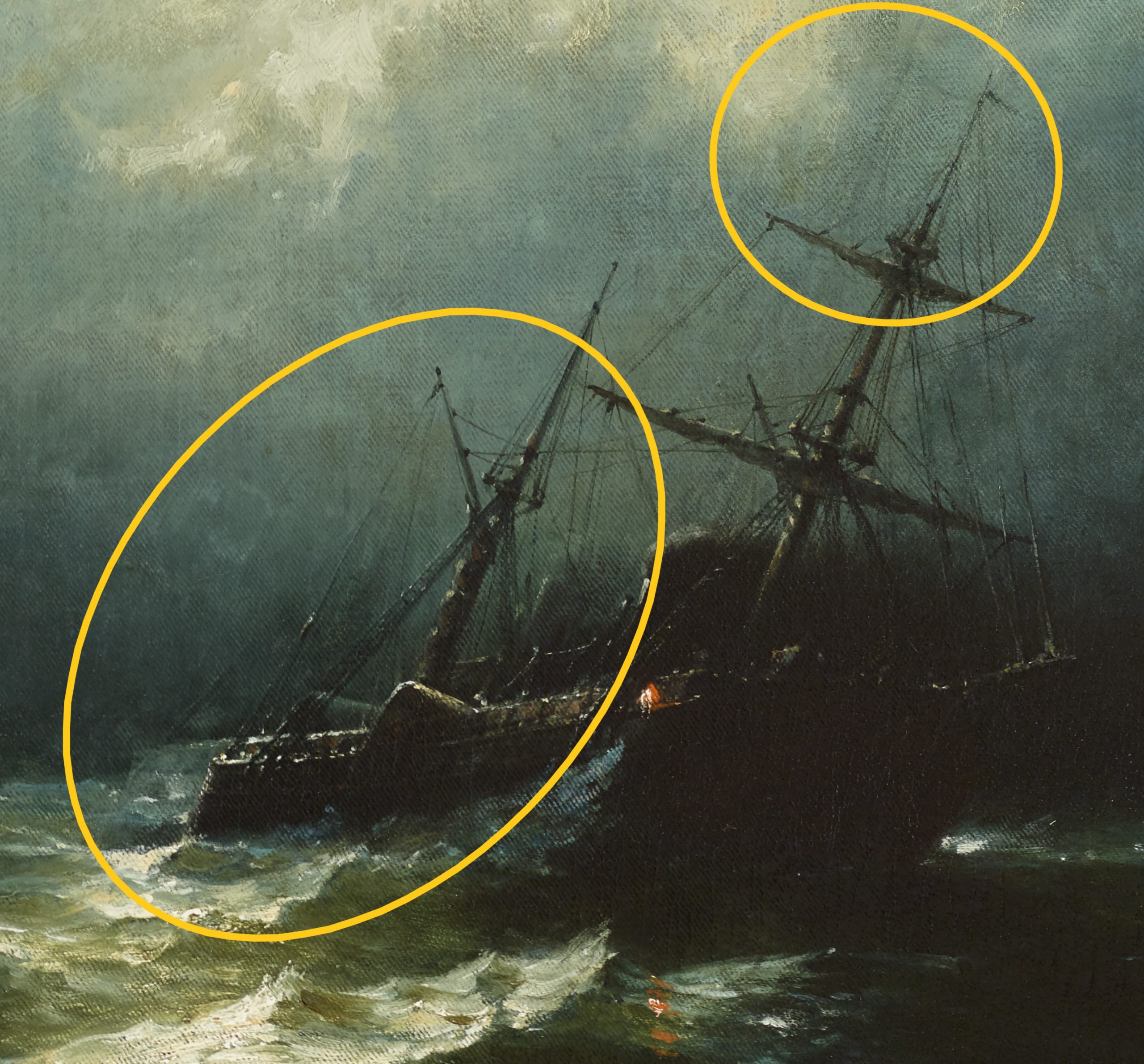
The pentimento behind USS Rhode Island achieves two things that amplify the drama in this work. First, the artist has changed the narrative – he’s moved the ship farther away from the lifeboat. He’s made that “will they, won’t they” moment even more intense by adding more treacherous water in between.
Secondly, it creates motion in the piece, almost like a blurry photo of a moving object. The lifeboat remains frozen in time while the Rhode Island moves farther and farther away.
We ask ourselves “Will they ever catch it or will it always be JUST beyond the grasps of those few lucky sailors so desperate for safety?”
A Symbol of Their Fate
Lastly and most ominously, we see the fate of USS Monitor and part of crew, symbolized by the red emergency signal lantern on the Rhode Island – that fiery dab of red pierces through the darkness and glistens in the water. The reflection seems to sink farther and farther until the light is lost to the sea. Eye-witnesses of this fateful night say that the last thing that could be seen of USS Monitor was its red emergency signal lantern, before it, too, slipped below the waves to rest on the seafloor.
The artist so successfully narrates this harrowing story through his techniques that, even without knowing anything about this story or its tragic ending, we are caught. We’re sucked in, tossed in those waves as if we’re on a third ship watching this scene play out. We’re set here, helpless spectators, already mourning the loss of the first Ironclad and the brave men who went down with the ship, desperately hoping these few survivors can make it across the dangerous moonlit waters to reach safety….He leaves us asking “Will they make it?” Will they, or won’t they?
Be sure to watch the full episode here and stay tuned for new episodes the first Friday of each month!
